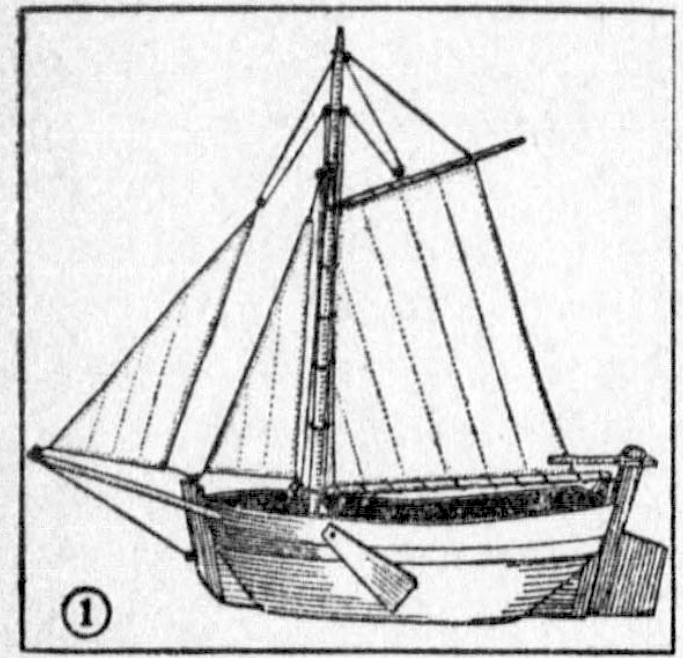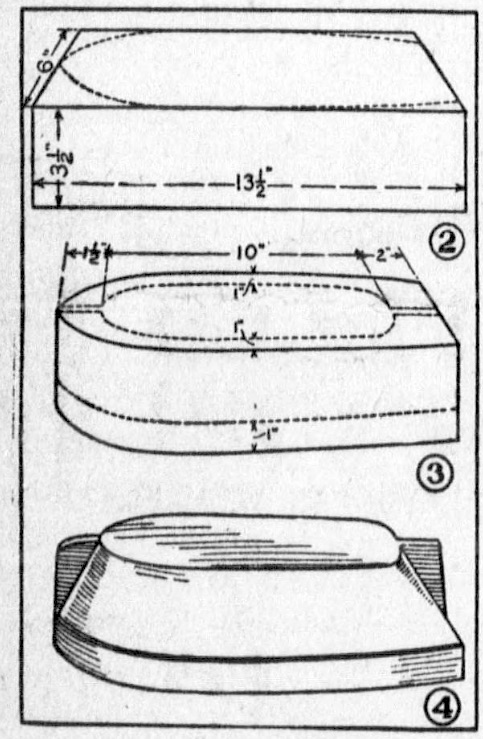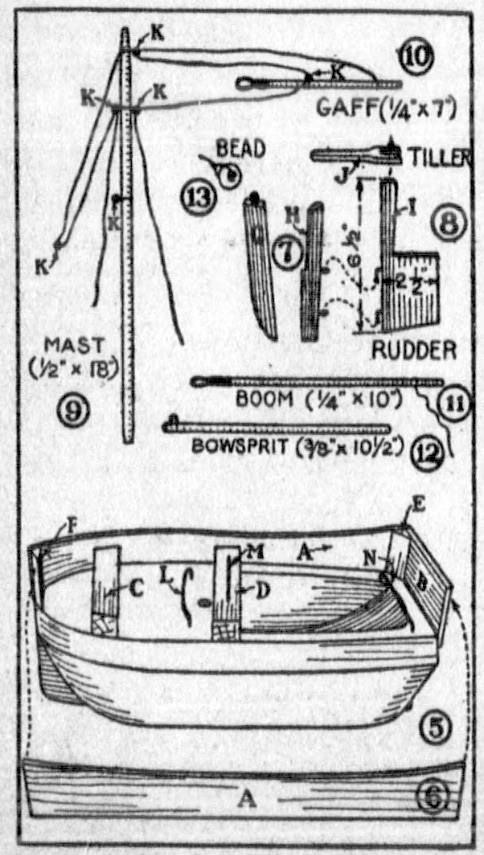
The instructions below are for a wooden toy sailboat and were originally published in 1915.

A Toy Sailboat
In Fig. 1 I have shown a sailboat with a broad hull of a satisfactory design that is easy to prepare. A solid block of wood of the dimensions shown in Fig. 2 is required for the hill. First mark out the curve of the deck, as indicated by dotted lines (Fig. 2), upon both top and bottom faces, then cut to these lines (Fig. 3). Next, mark off the shape of the bottom of the hull upon the bottom face of the block, as indicated by dotted lines in Fig. 3; also draw a line around the sides and bow and stern, one inch below the top (see dotted line); and pare down the sides from the dotted line to the line of the hull bottom, to make them of the form shown in Fig. 4. Be careful in marking out the hull, to get the sides exactly the same; and use an equal amount of care in cutting. With the outside cutting, scoop out one-half the length of the hull, for a cockpit (Fig. 5).

The gunwale strips A and B (Figs. 5 and 6) are lapped over and tacked to the upper edges of the hull. Cut them out of thin wood. Curve the top edge of strips A, as shown in Fig. 6. Cross strips C and D, and the corner blocks E and F (Fig. 5), are provided to brace the gunwales.
Finish the bow of the hull with strip G (Fig. 7), and the stern with strip H. The double-pointed tack in G is provided for the attachment of the foresail. Make the rudder as shown at I (Fig. 8), with a tiller stick (J, Fig. 8) tacked to its top. Drive a couple of brads into the long edge of the rudder, and bend them over for hooks to fit in a pair of small screw-eyes driven into stern strip H (Fig. 7).

Figs. 9 to 12 show the mast, gaff, boom and bowsprit. Bind a loop of wire to one end of both the boom and the gaff, to slip loosely over the mast, as shown. Drive a double-pointed tack into the bowsprit near one end, and slip the other end through a hole in one of the gunwales. Set the mast in a hole bored in the hull, and brace it on each side with stays tied to it and to double-pointed tacks driven into the gunwale edges.
Have mother make you a mainsail, a foresail, and a jibsail, of the proportions shown in Fig. 1, with each edge hemmed. Four fancy work rings should be sewed to the mainsail for mast hoops, and the top and bottom should be lashed to the boom and gaff with thread.
Figs. 9 and 10 show the halyards for raising and lowering the sails. Use beads for blocks (Fig. 13). There should be six of these blocks (see K, Figs. 9 and 10). The wire bars L, M and N (Fig. 5) are provided for tying the halyard ends to.
Source: The Southern herald. (Liberty, Miss.), 03 Dec. 1915.

